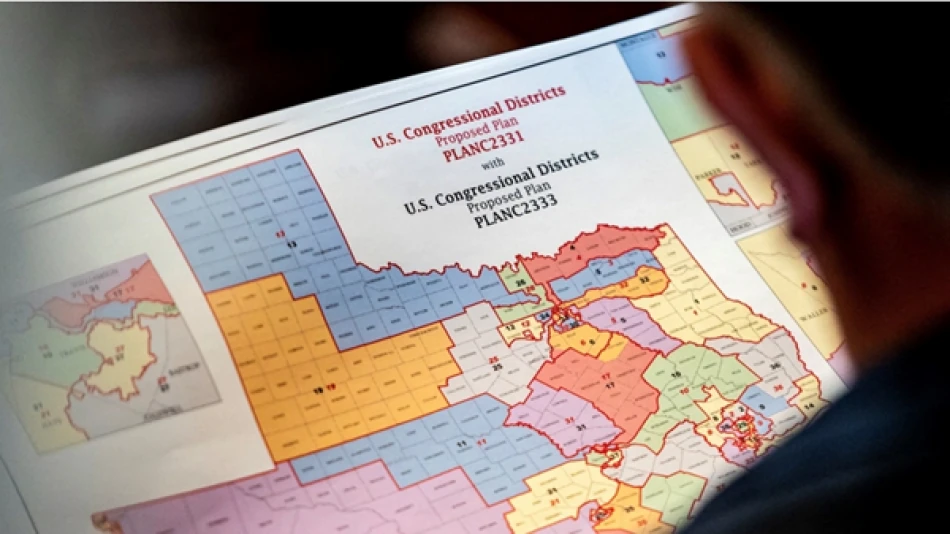
Texas Approves New Electoral District Map at Trump's Request
Texas Redistricting Battle Reveals Deep Fractures in America's Electoral System
The Texas legislature has finalized a controversial redistricting map that could deliver up to five additional congressional seats to Republicans in the 2026 midterm elections, highlighting how gerrymandering continues to shape American democracy. The move, publicly championed by President Donald Trump, underscores the high-stakes political maneuvering around congressional control and sets the stage for a tit-for-tat redistricting war with Democratic-controlled California.
Trump's Direct Intervention Pays Off
President Trump's public pressure campaign on Texas Republican officials has achieved its intended result. Writing on his Truth Social platform Wednesday, Trump celebrated the development: "We are on our way to gaining five additional seats in Congress, protecting your rights, freedoms, and your country itself. Texas never lets us down."
This direct presidential involvement in state-level redistricting represents an escalation in how national political figures engage with the traditionally state-controlled process of drawing electoral boundaries. Trump's narrow congressional majority makes every potential seat gain crucial for advancing his legislative agenda through 2028.
Democratic Resistance Tactics Fail
Texas Democrats employed a dramatic but ultimately unsuccessful strategy to block the redistricting plan. In early August, minority party legislators fled the state entirely, attempting to deny the quorum needed for voting. This tactic, reminiscent of similar walkouts in Wisconsin and Oregon in recent years, reflects the limited options available to minority parties in gerrymandered state legislatures.
The gambit collapsed when Democrats returned to the state, allowing Wednesday's decisive vote to proceed. Republican Governor Greg Abbott now holds the authority to officially implement the new electoral map.
California Strikes Back
The redistricting arms race intensified immediately as California, under Democratic Governor Gavin Newsom, announced parallel measures to redraw its own congressional districts. California's counter-move aims to secure five additional Democratic seats, effectively neutralizing Texas's Republican gains on a national scale.
This rapid response illustrates how redistricting has evolved into a zero-sum national strategy rather than a state-by-state process. Both parties now view electoral map-drawing as a critical tool for maintaining congressional control.
The Broader Implications for American Democracy
The Texas-California redistricting duel exposes fundamental weaknesses in America's electoral system. Unlike countries with independent redistricting commissions, the U.S. allows partisan-controlled state legislatures to draw their own electoral boundaries, creating inherent conflicts of interest.
Market and governance implications are significant. Increased partisan gerrymandering typically produces more ideologically extreme candidates who face little competition in general elections, potentially leading to greater policy volatility and legislative gridlock. This uncertainty can impact long-term business planning and investment decisions.
Historical Context and Future Outlook
This redistricting cycle occurs against the backdrop of the most polarized political environment in decades. Unlike previous redistricting battles that focused primarily on protecting incumbents, the current wave emphasizes maximum partisan advantage.
The 2026 midterm elections will serve as the first test of these new electoral maps. However, the real prize may be the 2030 redistricting cycle, when new census data will again reshape congressional representation. Both parties are likely positioning themselves for that longer-term battle, making current gains even more valuable as they provide additional state legislative seats that will control future redistricting processes.
The Texas victory gives Republicans a template for similar efforts in other states where they control state government, while California's response signals that Democrats will not cede ground without a fight. This dynamic suggests that gerrymandering will remain a central feature of American electoral competition for the foreseeable future.
Most Viewed News

 Layla Al Mansoori
Layla Al Mansoori






